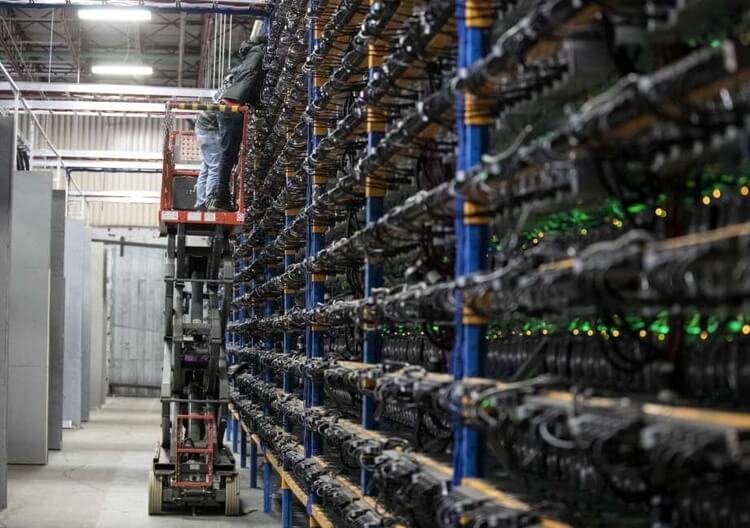Ethereal affairs: how to mine Ethereum

Speakin briefly, yes, Ethereum mining via the processor or NVIDIA is still possible. But this situation will change soon: it's all about the planned change in the algorithm for joining new blocks. At the moment, Ethereum is mined using the PoW (Proof-of-Work) method. In this framework, the right to sign a new block and get a reward is given to the user who is the first one to perform a computational task — that’s what mining is. This is how Bitcoin works, as well as lot of other cryptocurrencies.
However, there is an alternative approach — the PoS (Proof-of-Stake) algorithm. The processing of blocks occurs by those users who already have a cryptocurrency. The more the user has, the higher the chance that he or she will sign the next transaction. Accordingly, no extra resources are used, and the problem of a limited number of coins is solved. The examples of such cryptocurrencies are PeerCoin and Ripple.
Each algorithm has its pros and cons: for example, PoS doesn’t require significant energy costs, but in theory, it is more susceptible to the influence of notable players. Besides, coins like EmerCoin practice a hybrid approach, which is designed to balance the advantages and disadvantages. But what is really important about mining in 2018 Ethereum is going to switch to the Casper PoS algorithm, which is distinguished by advanced security features.
It is planned that the algorithm change will be gradual. In the first stages, only one transaction out of a hundred will be processed using the PoS algorithm, but eventually, the system will ultimately switch to the new method. And to prevent the use of the old blockchain by miners, the developers have foreseen the so-called “difficulty bomb”. After activating Casper, the time spent to the computing of the block will increase step by step. From a particular moment, the Ethereum mining will cease to be a matter.
However, Ethereum mining using GPU can still be profitable if you deal with the issue at some length. First of all, you need to decide on a specific way: use your own equipment or join an existing pool of miners.
To assess the feasibility of the first option, it is worth paying attention to the complexity of production and the time of finding one block, as well as on hash rate and the cost of electricity. To calculate the final result, you can use one of the calculators, which are abundantly presented on the web. Alas, the high popularity of Ethereum made it almost impossible to mine on one’s own equipment — unless, of course, there is a notorious hangar with GPUs at hand. This way, according to mining.alekseirubin.ru website, with the usage of of 3000 MH / s capacity, which corresponds to the power of a few powerful “farms”, the period of mining one block will take thirteen days on average. The same site advises not to engage in solo mining if the calculated period exceeds ten clock. However, if you do decide to use your own power, you can succeed with the following instructions.

How to mine Ethereum: a step-by-step guide
- Install the Geth application — the link between the computer and the Ethereum network. To do this, you need to download the application files, unpack them on the hard drive and change the directory via the command line with the command "cd".
- Create an account. To do this, enter the command "geth account new". Next, you need to enter a password and confirm it. After the end of the process, press Enter and wait until the blockchain load is completed.
- Synchronize with the Ethereum network using the geth-rpc-support-dao-fork command.
- Install the Ethminer program or another miner of your choice. Add it to the firewall exceptions, if necessary.
- Open the command line again. Type "cd prog" and press Tab. You will see something like "C: \ users \ username> cd /". Press Enter.
- Type cd cpp, press Tab and Enter. The result should look like this: "C: \ Program Files \ cpp-ethereum".
- Enter "ethminer -G" — and in about 10 minutes, you will start mining with a GPU.
The joint pool mining of Ethereum looks much more attractive. The server distributes the tasks among the participants and calculates the proper rewards. Several popular pools: dwarfpool, nanopool, ethereumpool. A commission of 1-2% is charged for use.
To start using the pool, install and run Ethminer, as described above. After that, enter the address of the resource, the number of your blockchain wallet and the corresponding commands.
For example: ethminer.exe -F
http://eth-ru2.dwarfpool.com:8008/0x164237ed91d1e911y56b7c0f98b5ab5fd2b3503-G.
After that, the extraction of ETH starts, and the earned coins will arrive in an account of the specified wallet.
Another way to get your virtual coins is to use cloud services. In this case, all equipment is initially provided by the owners of the site. The user simply rents the necessary power for a fee. You only need to have the same virtual wallet and registration on the website. But be careful with the choice of service — carefully check the reviews and read all the conditions.